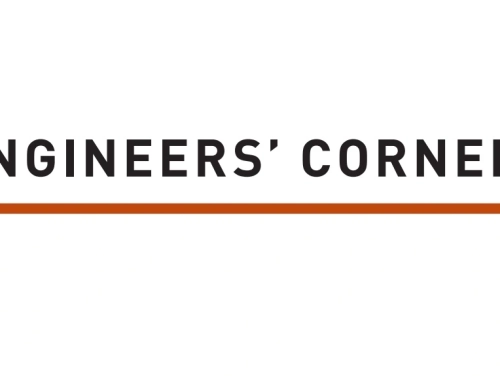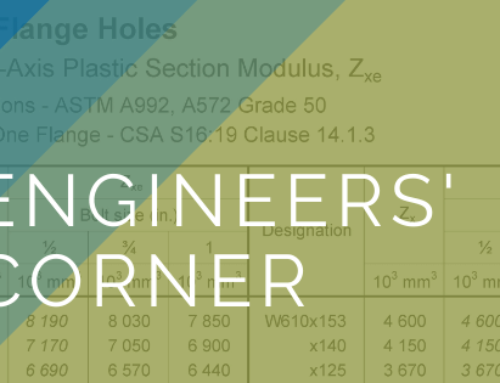In order to simplify the procedure for determining earthquake loads and effects in regions of low seismicity, a simplified static procedure has been introduced in National Building Code of Canada 2015. In this article, the force magnitude of a building in terms of the base shear, as determined in accordance with this simplified procedure, is compared to the base shear derived using the equivalent static force procedure and the base shear due to wind.
MAIN RESTRICTIONS
The application of this simplified procedure is subject to a number of restrictions. The main conditions that apply to structural steel seismic-force resisting systems, SFRS, are low specified spectral acceleration ratios at 0.2 second and 2.0 seconds, specifically, IEFsSa(0.2) < 0.16 and IEFsSa(2.0) < 0.03,
where:
IE and Sa(T) are the importance factor and the 5% damped spectral acceleration ratio for a period of T respectively, and
Fs, the site coefficient based on the top 30 metres of soil,
= 1.0 for rock sites, when N60 > 50 or when Su > 100 kPa,
= 1.6 when 15 ≤ N60 ≤ 50 or when 50 kPa ≤ Su ≤ 100 kPa, and
= 2.8 for all other cases (see NBC 2015 for precise definitions).
Unlike the site coefficient, F, used in other procedures, Fs is not period-dependent.
MINIMUM LATERAL DESIGN FORCE
Within the stated restrictions, the minimum lateral earthquake design force at the base of the structure, Vs = IEFsSa(Ts)Wt/Rs
where:
Wt = the building weight,
Rs = 1.5 except Rs = 1.0 where a weak storey condition exists, and
Ts = 0.025hn for steel braced frames and
= 0.085(hn)3/4 for steel moment frames,
hn being the height from the base.
Vs is subjected to a minimum value that corresponds to Ts = 1 second and, where Rs = 1.5, Vs need not exceed the value corresponding to Ts = 0.5 second.
CASE COMPARISON
The seismic design base shear of a six-storey steel-framed commercial building (see Figure 1) is determined in accordance with the simplified procedure and the equivalent static force procedure. The seismic force parameters are as follows:
Locality: Windsor, Ontario
Sa(0.2) = 0.096, Sa(0.5) = 0.063, Sa(1.0) = 0.035, Sa(2.0) = 0.017;
N60 = 40; Wt = W = 33 900 kN;
hn = 22.7 m; steel braced frame SFRS;
weak storey precluded, i.e. Rs = 1.5.
Simplified procedure:
Fs = 1.6 (N60 < 50)
IEFsSa(0.2) = 1.0(1.6)(0.096) = 0.154 < 0.16
IEFsSa(2.0) = 1.0(1.6)(0.017) = 0.027 < 0.03
Ts = 0.025hn = 0.025(22.7) = 0.568 s
Ts < 1s but > 0.5 s
Sa(0.568) = 0.059 (by interpolation)
IEFsSa(Ts)Wt/Rs = 1.0(1.6)(0.059)(33 900)/1.5 = 2130 kN
Equivalent static force procedure:
Rd = 1.5; Ro = 1.3 (Conventional Construction)
Ta = 1.14 s (Ta is longer but limited to 2 x 0.025hn)
V = IEFSa(1.14)WMv/(RdRo) = 869 kN
Wind base shear for open terrain = 1480 kN
In summary, the simplified procedure gives a seismic base shear that is 2.5 times the value derived from the equivalent static force procedure. If the simplified procedure is used, seismic forces control the design; otherwise wind effects govern.
It should be noted that the simplified procedure gives even more conservative results for Site Classes A and B because Fs = 1. However, when the simplified procedure is permitted and used, some restrictions and additional requirements for post-disaster buildings, including the use of more ductile systems, are waived.

FIGURE 1: Six-storey steel-framed commercial building





